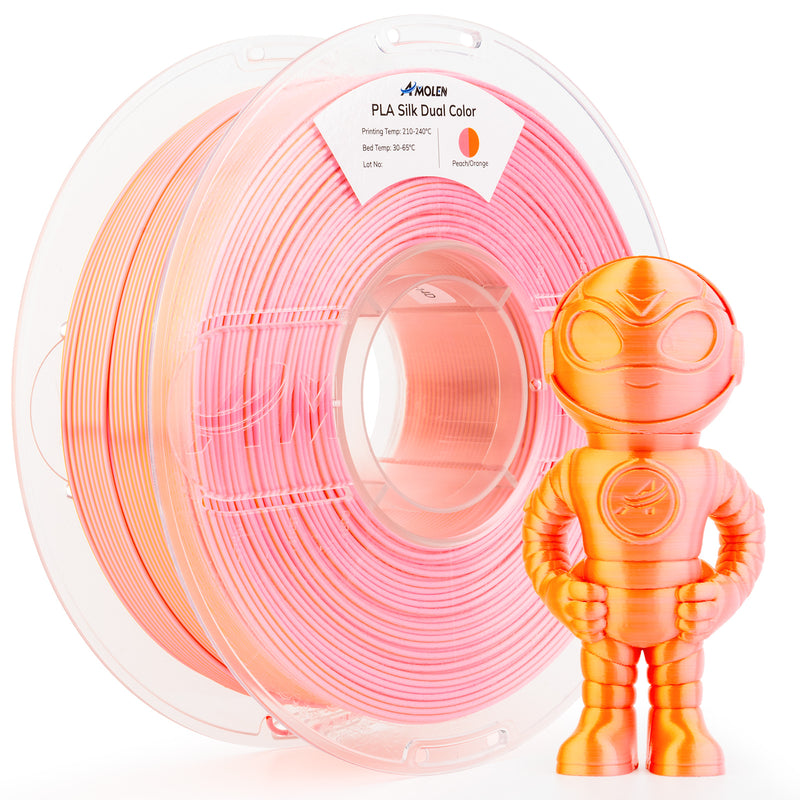Unlocking the Secrets of Silk PLA: The Ultimate Guide to Stunning 3D Prints!
In the vibrant world of 3D printing, silk PLA filament has emerged as a favorite among enthusiasts and professionals alike. This unique material not only enhances the aesthetic appeal of printed objects but also offers a range of properties that make it suitable for various projects. Silk PLA, with its shimmering finish and vibrant colors, has captivated the attention of many in the 3D printing community, promising to take your creations to a new level of beauty. In this article, we will delve into the characteristics, performance, and applications of silk PLA filament, helping you understand why it could be the perfect choice for your next project.

Understanding Silk PLA Filament
Silk PLA filament is a modified version of traditional polylactic acid (PLA) filament, enriched with additives that enhance its glossy finish and color depth. The primary ingredient, PLA, is derived from renewable resources such as corn starch, making it an eco-friendly option for 3D printing. What sets silk PLA apart from standard PLA is its unique blend of materials that imparts a silk-like sheen, resulting in a surface that often resembles polished glass. This filament is available in a wide array of colors, allowing for creative expression in your projects. Many users have noted that silk PLA prints exhibit fewer layer lines compared to regular PLA, contributing to a more refined appearance. However, it’s essential to be aware that the composition of silk PLA can vary by manufacturer, affecting its properties such as flexibility and strength.
Performance in 3D Printing
When it comes to printing performance, silk PLA filament has garnered praise for its ease of use, making it an excellent choice for both beginners and experienced users. Many of my friends who have worked with silk PLA have shared their experiences of minimal warping and excellent adhesion to the print bed, which can be a common issue with other materials. The filament flows smoothly through the extruder, and with the right temperature settings, prints come out with impressive detail and finish. However, some users have encountered challenges, particularly with larger prints that may require additional cooling to prevent stringing and oozing. It's crucial to fine-tune your printer settings and possibly experiment with different print speeds to achieve optimal results.
Aesthetic Qualities of Silk PLA Prints
The aesthetic qualities of silk PLA prints are undoubtedly among its most appealing attributes. The filament’s glossy finish enhances color vibrancy, making it an ideal choice for decorative models and art pieces. Users have reported that prints made with silk PLA have a strikingly smooth surface that catches light beautifully, creating a stunning visual effect. This quality makes silk PLA particularly suitable for items like figurines, jewelry, and intricate designs. Many artists and designers I know have used silk PLA to produce eye-catching prototypes that stand out in presentations. The ability to achieve a polished look without extensive post-processing is a significant advantage, allowing creators to focus on their designs rather than finishing touches.
Applications and Suitability
Silk PLA filament is versatile, making it suitable for a wide range of 3D printing applications. Its aesthetic qualities lend themselves well to projects such as decorative items, trophies, and awards, where appearance is paramount. Additionally, silk PLA is often used for creating prototypes that require visual appeal to attract potential clients or investors. However, it’s essential to consider the durability of silk PLA when selecting it for functional models. While it can withstand light use, it may not be the best choice for items subjected to stress or heavy wear. Many of my acquaintances in the 3D printing community suggest using silk PLA for items that will be displayed or used in low-stress environments, ensuring that your creations maintain their stunning appearance over time.
Tips for Successful Printing with Silk PLA
To achieve optimal results with silk PLA filament, there are several practical tips to keep in mind. First, ensure your 3D printer is calibrated correctly, particularly the bed leveling, to promote adhesion during the printing process. It’s often recommended to use a slightly lower nozzle temperature than you would for standard PLA, as silk PLA can be sensitive to overheating, which may lead to stringing. Additionally, using a fan for cooling can help maintain the quality of your prints. Experimenting with print speeds can also yield different finishes; slower speeds often produce finer details. Lastly, consider using a clean print surface, as dust and debris can affect adhesion and the final appearance of your prints.
Final Thoughts on Silk PLA Filament
In conclusion, silk PLA filament is an exciting option for anyone looking to elevate their 3D printing projects. Its unique properties, ease of use, and stunning aesthetic qualities make it a worthwhile investment for both hobbyists and professionals. While there are considerations regarding its durability for functional items, the visual appeal of silk PLA prints is hard to overlook. By following best practices for printing with this filament, you can achieve beautiful results that truly showcase your creativity. Silk PLA is more than just a filament; it’s a medium that allows artists and creators to express their visions in a captivating way.








